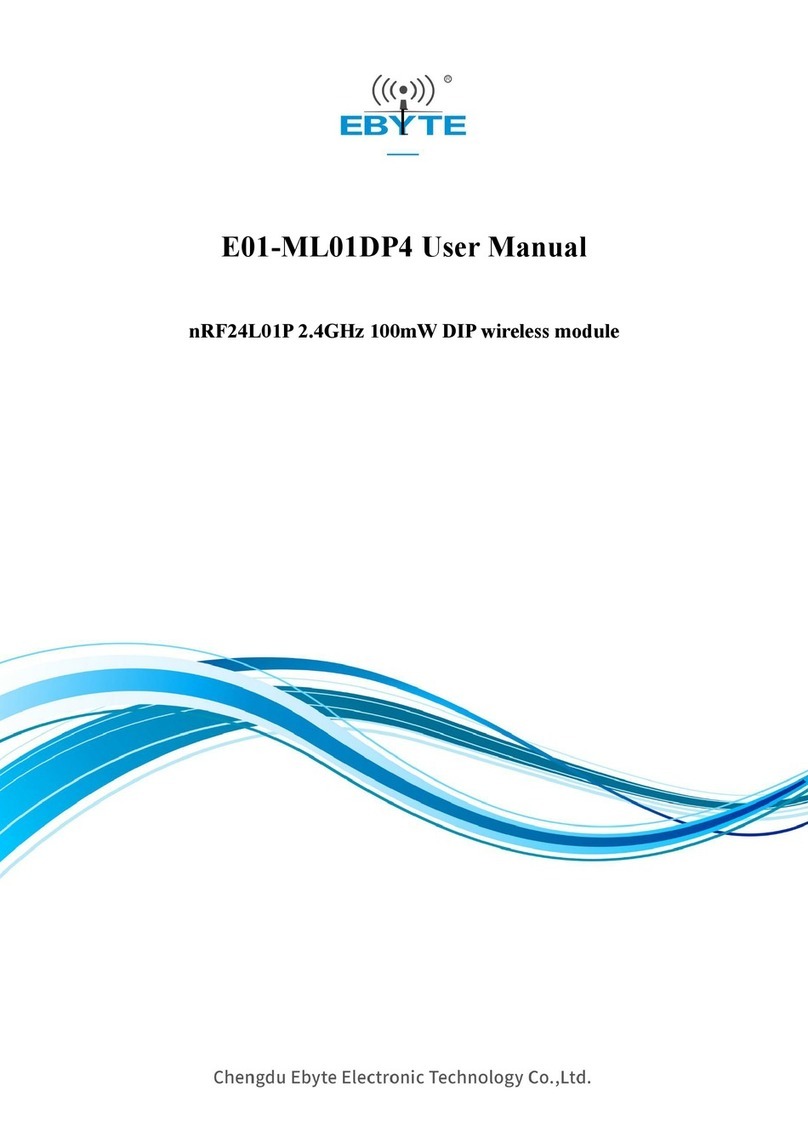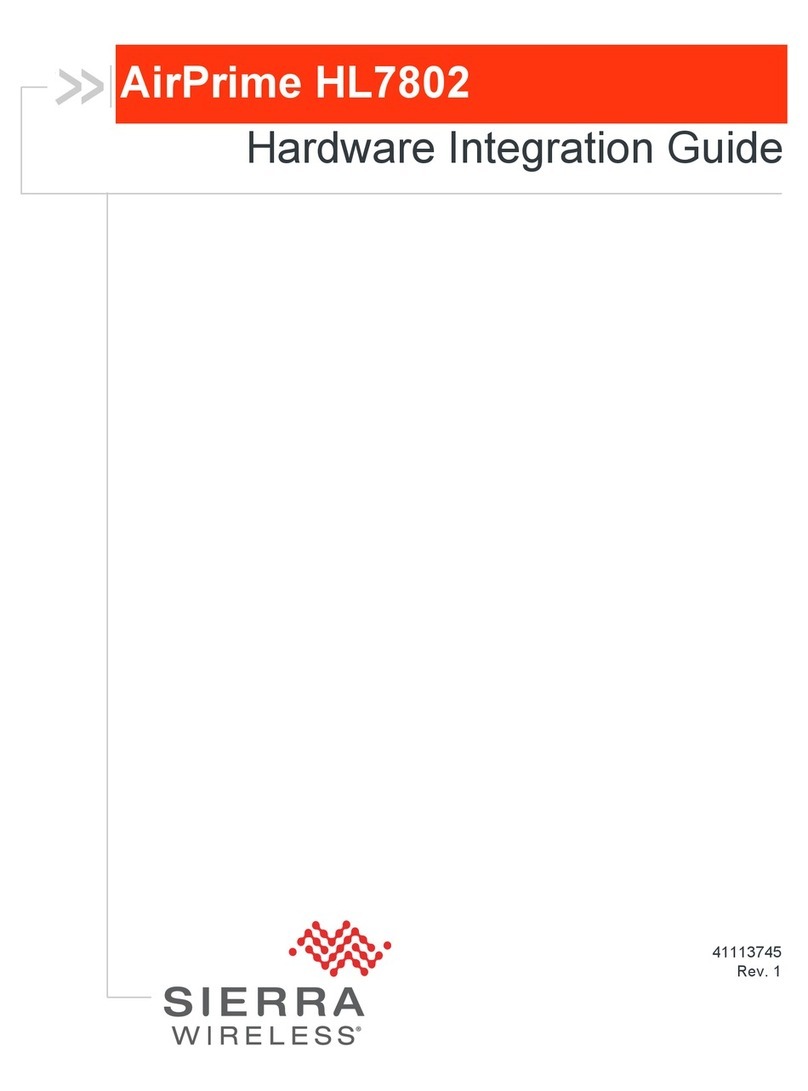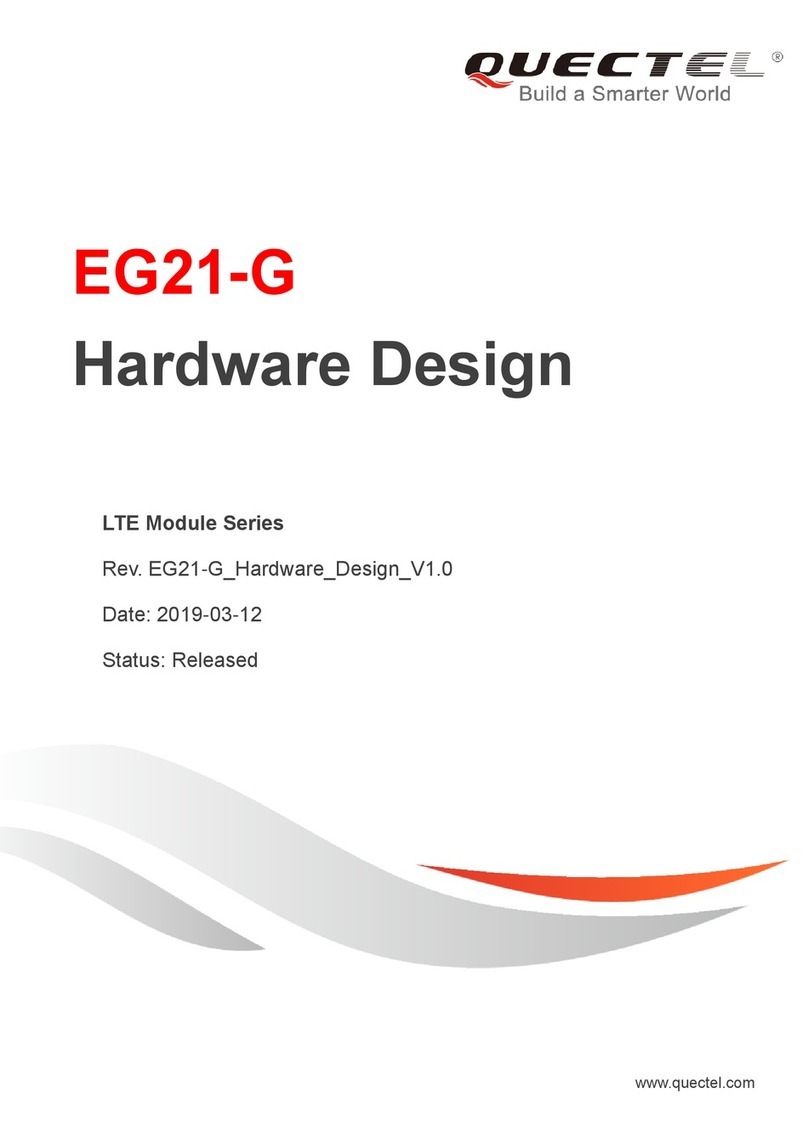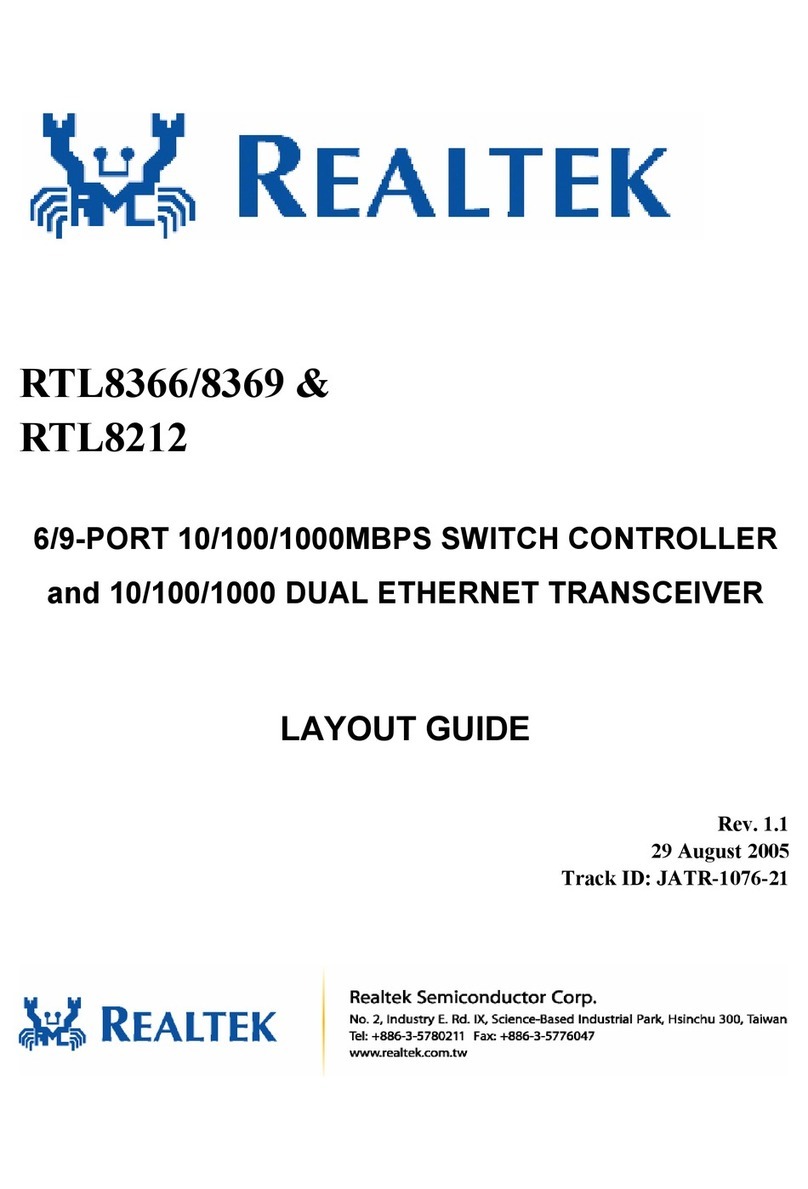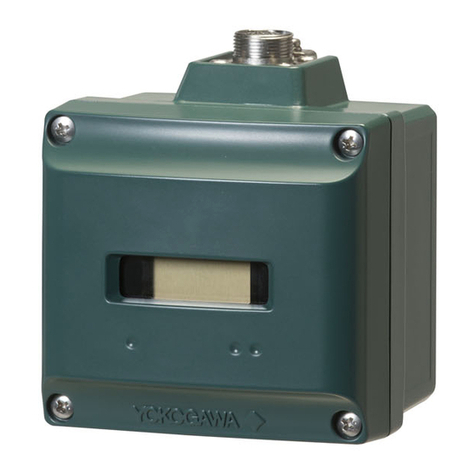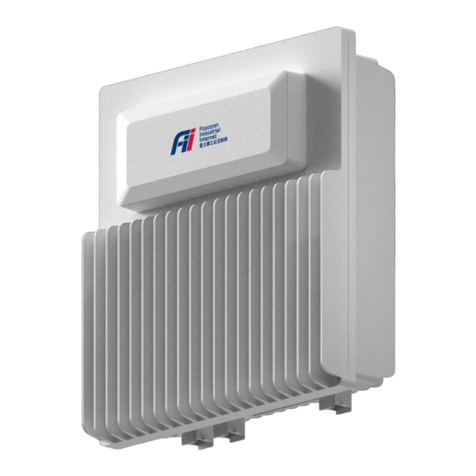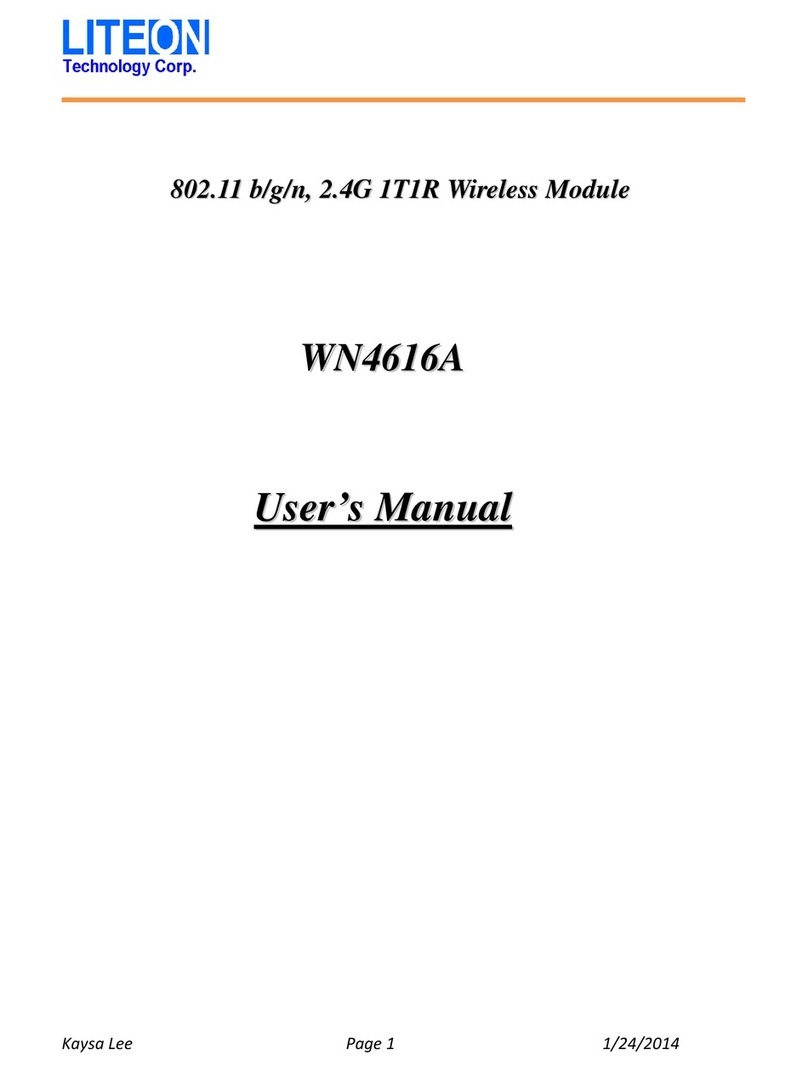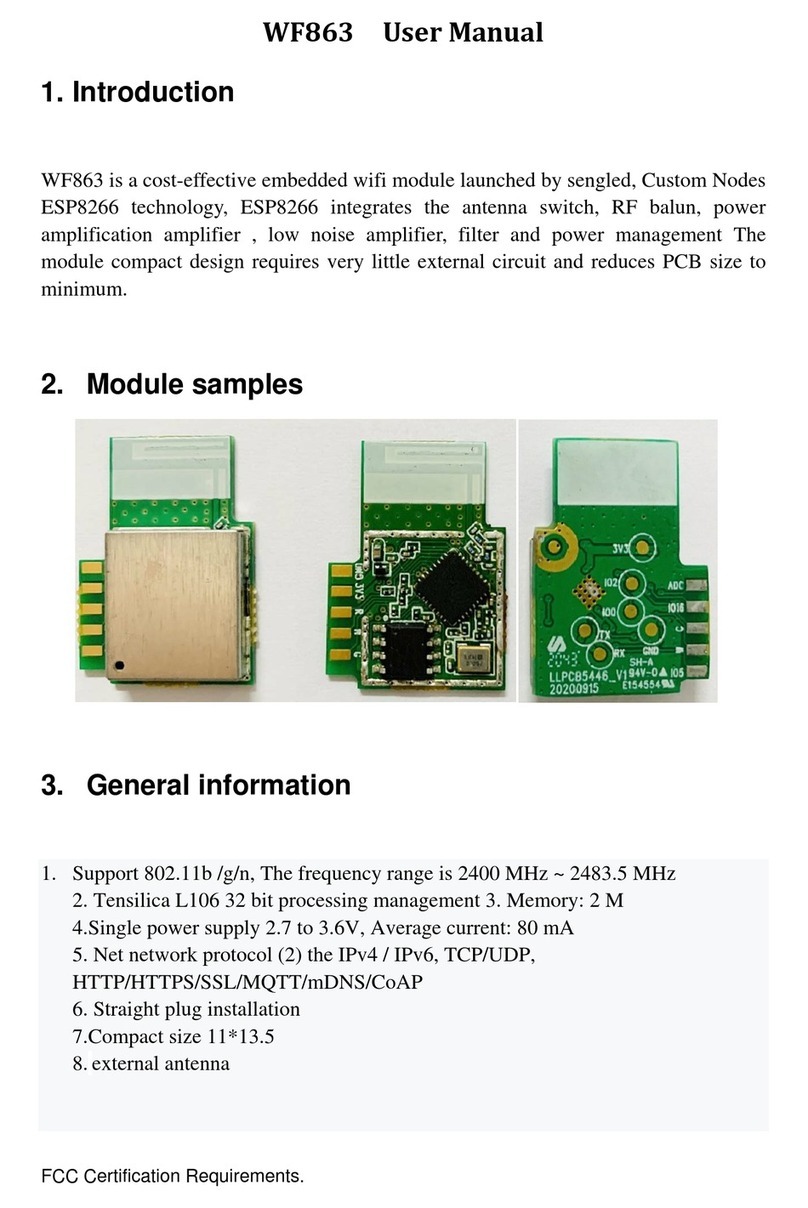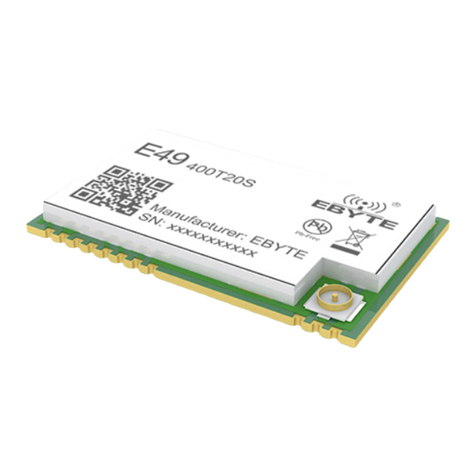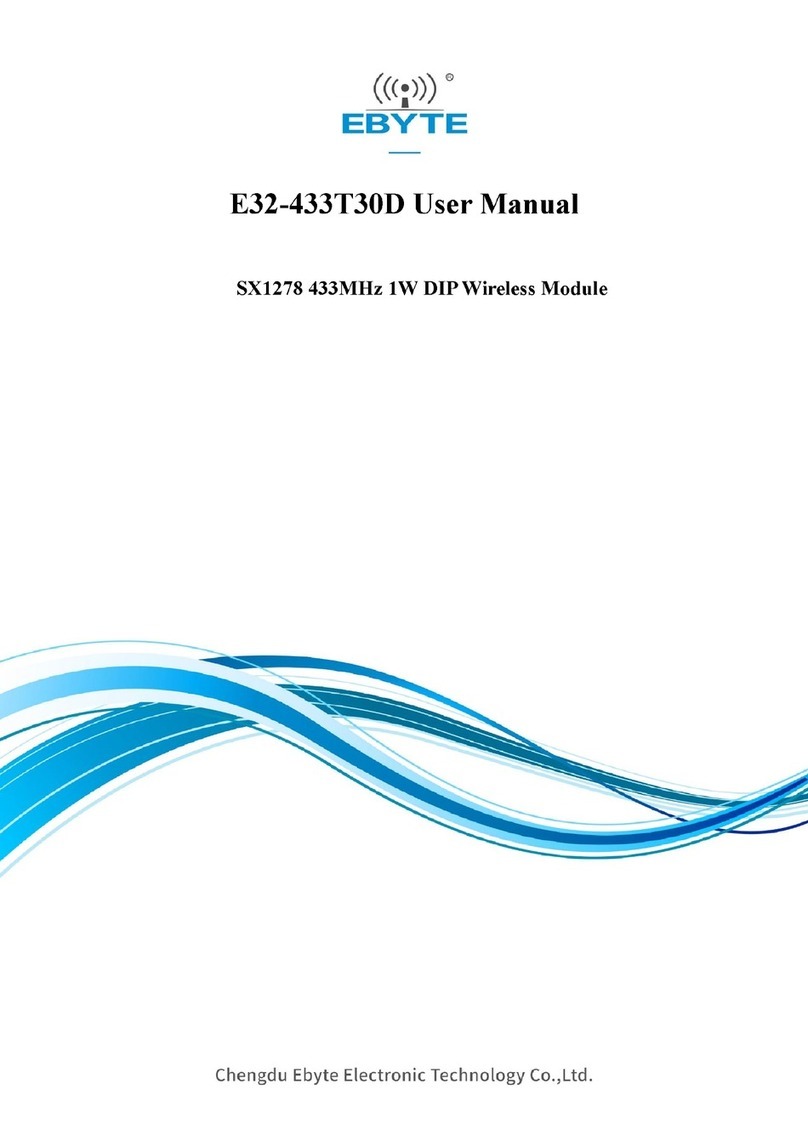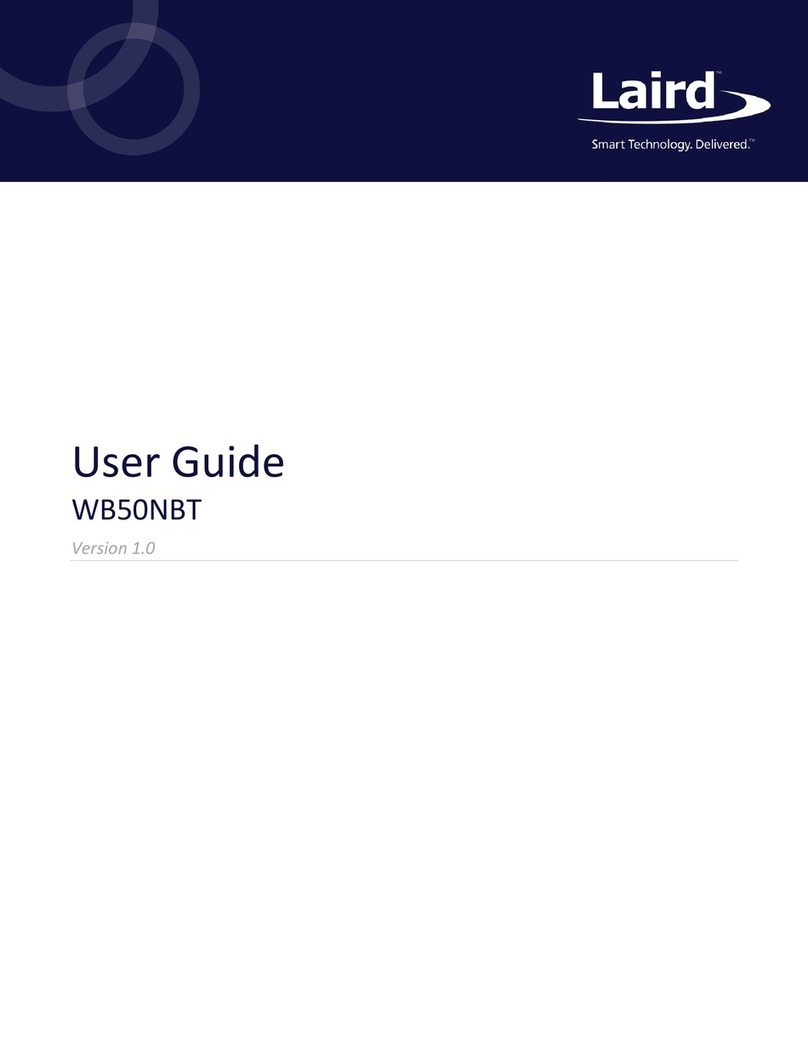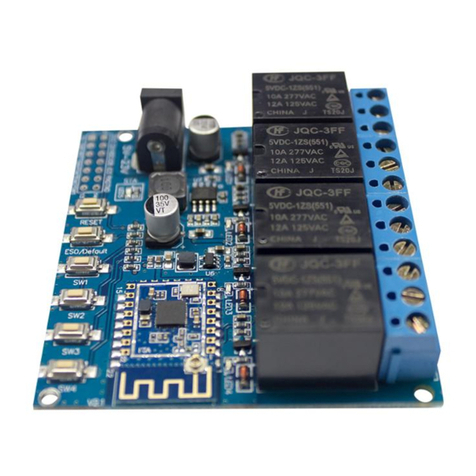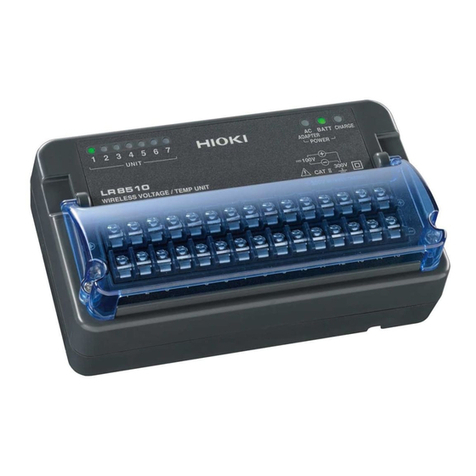IMST iC880A-SPI User manual

iC880A-SPI QuickStart Guide
How to get started with the iC880A-SPI
Document ID: 4100/40140/0096
Category: confidential
IMST GmbH
Carl-Friedrich-Gauss-Str. 2-4
D-47475 Kamp-Lintfort

iC880A-SPI QuickStart Guide - QuickStart Guide
Overview confidential
iC880A-SPI_QuickStartGuide.docx, Wireless Solutions, V0.1 page 2 of 17
Document Information
File name
iC880A-SPI_QuickStartGuide.docx
Created
2015-03-15
Total pages
17
Revision History
Version
Description
0.1
Preliminary version.
Aim of this Document
Aim of this document is to give some quick start instructions how to start working with the
WiMOD iC880A-SPI.
Confidentiality Note
This document has to be treated confidentially. Its content must not be published, duplicated or
passed to third parties without our express permission.

iC880A-SPI QuickStart Guide - QuickStart Guide
Overview confidential
iC880A-SPI_QuickStartGuide.docx, Wireless Solutions, V0.1 page 3 of 17
Table of Contents
1OVERVIEW 4
1.1 Hardware PCB 4
1.2 Basic System Concept 5
1.3 Linux Host System 5
1.4 Hardware Connection 6
1.4.1 Pin Headers 6
2OPEN SOURCE DRIVER ON GITHUB 8
2.1 Download of the Open Source Driver 9
2.2 Preparing the host system (Raspberry Pi) 9
2.2.1 Preparing the SPI Interface 9
2.2.2 Preparing the Reset Pin Control 9
2.3 Configuration of the Driver 11
2.4 Compilation of the Library 11
2.5 Example Utilities 11
2.5.1 util_tx_test 12
2.5.2 util_pkt_logger 12
3NEXT STEPS 15
4REGULATORY COMPLIANCE INFORMATION 16
5IMPORTANT NOTICE 17
5.1 Disclaimer 17
5.2 Contact Information 17

iC880A-SPI QuickStart Guide - QuickStart Guide
Overview confidential
iC880A-SPI_QuickStartGuide.docx, Wireless Solutions, V0.1 page 4 of 17
1Overview
Purpose of this documentation is to give some useful information how to get started with the
iC880A-SPI and the open source LoRa HAL published on the github platform.
The concentrator module iC880A-SPI is meant to be connected to a host system forming an
integrated gateway.
1.1 Hardware PCB
Figure 1-1 depicts the printed circuit board of the iC880A-SPI. As main interface there are the
pin headers for connecting the board to a host system that runs the driver software. A SMA
connector or an uFL connector is supplied in order to connect any suitable antenna to this
board. The board offers some LEDs to give a visual feedback of the current operation status of
the board. The concrete meaning of the LEDs is software dependant. As default in Version 1.7
the setting of the LEDs is:
1) Backhaul packet
2) TX packet
3) RX Sensor packet
4) RX FSK packet
5) RX buffer not empty
6) Power
Figure 1-1Picture of iC880A-SPI

iC880A-SPI QuickStart Guide - QuickStart Guide
Overview confidential
iC880A-SPI_QuickStartGuide.docx, Wireless Solutions, V0.1 page 5 of 17
1.2 Basic System Concept
Figure 1-2 shows the basic system concept for the LoRA WAN system. The iC880A-SPI is the
central hardware solution for all LoRa based radio communication. It receives and transmits
radio messages. Processing of the radio messages as well as the protocol related tasks is done
by (external) host system(s). The concrete segmentation of the protocol related tasks is outside
the scope of this document.
Figure 1-2: Basic System Concept
1.3 Linux Host System
As a host system an (embedded) Linux host system is planned to be used. This quick start guide
assumes that the user has got an (embedded) Linux host system (e.g. Raspberry PI, or similar), is
familiar with the basic concept of a Linux console and knows how to compile source code.
All commands shown in this document are tested with a Debian 8 “Jessie” Linux distribution on
a Raspberry PI B+.
pi@raspberrypi ~ $ lsb_release -a
No LSB modules are available.
Distributor ID: Raspbian
Description: Raspbian GNU/Linux 8.0 (jessie)
Release: 8.0

iC880A-SPI QuickStart Guide - QuickStart Guide
Overview confidential
iC880A-SPI_QuickStartGuide.docx, Wireless Solutions, V0.1 page 6 of 17
Codename: Jessie
pi@raspberrypi ~ $ uname -a
Linux raspberrypi 3.18.7+ #755 PREEMPT Thu Feb 12 17:14:31 GMT
2015 armv6l GNU/Linux
It is possible to use any other host system and Linux distribution, but there may be some
variations in the commands, that are not within the scope of this document.
Especially the Linux kernels that use the feature called “device-tree” seem to have a timing
related problem with the SPI CE lines. This may cause communication disorders / problems on
the SPI bus. (For the Raspberry Pi the kernel versions 4.x and newer seem to have that problem.)
Fixing these kernel related SPI problems is however outside the scope of this document.
The basic setup of the (embedded) Linux host system (keyboard layout, time zone, network
connectivity, accessibility, …) is outside of the scope of this document, too.
1.4 Hardware Connection
The iC880A-SPI provides SPI –pin headers as main interface to the Linux host system. Before
connecting the iC880A-SPI and the host, please read this document carefully. In order to
establish a logical connection the host needs to have some drivers installed.
1.4.1 Pin Headers
In order to establish a SPI connection between the iC880A-SPI and the host system, the
following pins have to be used as minimum wiring set:
PIN
PIN Name
PIN Type
Description
21
VDD
Power
+5 V Supply Voltage (> 700mA)
22
GND
Power
14
CLK
Input
Sx1301 SPI-Clock
15
MISO
Output
Sx1301 SPI-MISO
16
MOSI
Input
Sx1301 SPI-MOSI
17
NSS
Input
Sx1301 SPI-NSS
13
Reset
Reset
Sx1301 Reset,
for a stable start-up Reset should be at high-level
for 100 ns (min), once the supply voltage is stable
12
GND
Power
Table 1-1: iC880A-SPI Minimum Pinout Table
The power pins (21, 22) have to be connected to a power source that is able to provide more

iC880A-SPI QuickStart Guide - QuickStart Guide
Overview confidential
iC880A-SPI_QuickStartGuide.docx, Wireless Solutions, V0.1 page 7 of 17
than 700 mA. Therefore it is recommended to choose a proper power supply that is able to
supply the iC880A-SPI and the host system (e.g. Raspberry PI) at the same time. (See Figure 1-3)
WiringPi
Raspberry Pi
(B / B+)
Pin
Pin
Raspberry Pi
(B / B+)
WiringPi
-
+ 3,3 V
1
2
+ 5 V
-
8
(SDA1) GPIO
2
3
4
+ 5 V
-
9
(SCL1) GPIO
3
5
6
GND
-
7
(GPIO_GCLK)
GPIO 4
7
8
GPIO 14
(TXD0)
15
-
GND
9
10
GPIO 15
(RXD0)
16
0
(GPIO_GEN0)
GPIO 17
11
12
GPIO 18
(GPIO_GEN1)
1
2
(GPIO_GEN2)
GPIO 27
13
14
GND
-
3
(GPIO_GEN3)
GPIO 22
15
16
GPIO 23
(GPIO_GEN4)
4
-
+ 3,3 V
17
18
GPIO 24
(GPIO_GEN5)
5
12
(SPI_MOSI)
GPIO 10
19
20
GND
-
13
(SPI_MISO)
GPIO 9
21
22
GPIO 25
(GPIO_GEN6)
6
14
(SPI_SLCK)
GPIO 11
23
24
GPIO 8
(SPI_CE0_N)
10
-
GND
25
26
GPIO 7
(SPI_CE1_N)
11
special I2C
27
28
special I2C
GPIO 5
29
30
GND
GPIO 6
31
32
GPIO 12
GPIO 13
33
34
GND
GPIO 19
35
36
GPIO 16
GPIO 26
37
38
GPIO 20
GND
39
40
GPIO 21
Table 1-2: Raspberry PI GPIO Pin Table

iC880A-SPI QuickStart Guide - QuickStart Guide
Open Source Driver on Github confidential
iC880A-SPI_QuickStartGuide.docx, Wireless Solutions, V0.1 page 8 of 17
The SPI pins (14 to 17) have to be connected to the according pins of the host system. As an
example Table 1-2 illustrates the GPIO ports of a Raspberry Pi. The SPI functionality is given by
the pins 19, 21, 23 and 24.
Additionally the Reset pin of the iC880A-SPI has to be connected to the host system. On the host
side virtually any normal GPIO pin can be used for that. (In the following pin 11 aka. GPIO17
is considered to be connected to the reset pin.)
Figure 1-3 depicts the necessary connections between the host and the iC880A-SPI.
Figure 1-3: Connection variants between Host and iC880A-SPI
It is recommended to connect the necessary signals using wires that are as short possible in
order to prevent communication disorders.
2Open Source Driver on Github
Semtech provides an open source driver for SX1301 based LoRa solutions. The complete
repository is hosted on the github platform ( https://github.com/ ).
The main vanilla source repository for the LoRa related projects maintained by Semtech can be
found at:
https://github.com/Lora-net
There you will find an implementation for the HAL (Hardware Abstraction Layer) of SX1301based
designs. This implementation is called "lora_gateway" (https://github.com/Lora-
net/lora_gateway ). This document references to version 3.2 of the lora_gateway repository.
Newer or other versions of this software may behave differently or may require a different

iC880A-SPI QuickStart Guide - QuickStart Guide
Open Source Driver on Github confidential
iC880A-SPI_QuickStartGuide.docx, Wireless Solutions, V0.1 page 9 of 17
configuration. Changes / updates within all relevant software repositories are subject to change
without notice.
2.1 Download of the Open Source Driver
Install a git client on your (embedded) host system: On Debian based systems the git client can
be installed by calling the following command in a terminal emulator / console:
sudo apt-get install git
Create local folder that should contain the local copy of the repository:
mkdir -p ~/LoRa/lora_gateway
Get a copy of the repository:
cd ~/LoRa/lora_gateway
git clone https://github.com/Lora-net/lora_gateway.git
2.2 Preparing the host system (Raspberry Pi)
2.2.1 Preparing the SPI Interface
The github open source driver (in version 3.2 and newer) requires a “native” SPI interface of the
host system to be present. This is by default called “/dev/spidev0.0”. In order to use this
interface, it must be enabled on the Raspberry Pi platform. To enable it the user must call the
following command in a terminal emulator / console of the Raspberry Pi running the Debian
based Rasbian distribution:
sudo raspi-config
A text based menu will appear and the user has to enter the “Advanced Options” sub menu.
Next the entry “SPI” has to be chosen and the following two questions have to be answered with
the “Yes” option. After a reboot of the system the SPI interface is ready to be used.
2.2.2 Preparing the Reset Pin Control
Now that the SPI interface is accessible, the control logic for the reset pin has to be set up.
During the development history of the LoRa driver, the support for GPIO pin control has been
removed from the sources. (Note: the repository is not maintained by IMST.) That means the
user has to take care of it via an additional piece of software. In general there are two
possibilities to control the GPIO pin that is connected to the Reset pin of the iC880A-SPI.

iC880A-SPI QuickStart Guide - QuickStart Guide
Open Source Driver on Github confidential
iC880A-SPI_QuickStartGuide.docx, Wireless Solutions, V0.1 page 10 of 17
2.2.2.1.1 Possibility A: Control the GPIO pin via a shell script
A small shell script can be written to reset the iC880A-SPI before the LoRa driver can access the
hardware. The content of the shell script can look like the following example (which assumes
that the GPIO 17 (pin 11) of the Raspberry Pi is connected to the reset pin of the iC880A-SPI):
#!/bin/bash
echo "17" > /sys/class/gpio/export
echo "out" > /sys/class/gpio/gpio17/direction
echo "1" > /sys/class/gpio/gpio17/value
sleep 5
echo "0" > /sys/class/gpio/gpio17/value
sleep 1
echo "0" > /sys/class/gpio/gpio17/value
These lines can be stored in a file called “iC880-SPI_reset.sh”. The user must call this script
once after every boot up in order to get the concentrator IC in a clean state.
2.2.2.1.2 Possibility B: Control the GPIO pin via a compiled C-Tool / library
If the host system is a Raspberry Pi the user can write a small C-Tool to reset set the iC880A-SPI.
In order to access the GPIO pins of the Raspberry Pi there is a library called “wiringPi” that takes
care of the low level details. The library can be downloaded from http://wiringpi.com. Please
refer to this site to get installation and usage instructions. The content of the iC880-SPI_reset.c
file can look like the following:
#include <wiringPi.h>
#include <unistd.h>
#define GPIO_RESET_PIN 0 // see wiringPi mapping!
int main() {
wiringPiSetup();
pinMode(GPIO_RESET_PIN, OUTPUT);
digitalWrite(GPIO_RESET_PIN, HIGH);
sleep(5);
digitalWrite(GPIO_RESET_PIN, LOW);
return;
}
The user must call this tool once after every boot up in order to get the concentrator IC in a
clean state.

iC880A-SPI QuickStart Guide - QuickStart Guide
Open Source Driver on Github confidential
iC880A-SPI_QuickStartGuide.docx, Wireless Solutions, V0.1 page 11 of 17
(As an alternative to an external program, the reset routine shown can also be copied into the
“lgw_spi_open()” function that is located in the file called “loragw_spi.native.c”.)
2.3 Configuration of the Driver
The driver can be configured in order to change the verbosity level of the internal processes
within the library.
The filef ile lora_gateway/libloragw/library.cfg is used as general configuration file for the whole
libloragw system library. In order to fit the needs of the iC880A-SPI, some parameters can
be set to the following values prior (re-) compiling the library:
DEBUG_AUX= 0
DEBUG_SPI= 0
DEBUG_REG= 0
DEBUG_HAL= 1
DEBUG_GPS= 0
These flags are used by the internal modules of the library to enable / disable additional output
for debugging purposes.
2.4 Compilation of the Library
In order to compile the libloragw library it is assumed that a gcc/g++ compiler and a make
utility is already installed and runable.
Enter the lora_gateway folder and execute the make command:
cd lora_gateway
make
This will compile the library and some of the basic test utilities located in the subfolders of
lora_gateway.
After a successful compilation a library file called “libloragw.a”has been created and is
ready for usage now.
2.5 Example Utilities
In the folder lora_gateway there are several example utilities showing the usage of the
libloragw library. This quick start guide will show the “util_pkt_logger” and the
“util_tx_test”.

iC880A-SPI QuickStart Guide - QuickStart Guide
Open Source Driver on Github confidential
iC880A-SPI_QuickStartGuide.docx, Wireless Solutions, V0.1 page 12 of 17
2.5.1 util_tx_test
This is a small utility demonstrating the ability to send out some data via the iC880A-SPI
concentrator device. To start this utility go into the folder and start it:
cd lora_gateway/util_tx_test
./util_tx_test –r 1257 –f 866.5
The program should start and print out some output like that:
Sending -1 packets on 866500000 Hz (BW 125 kHz, SF 10, CR 1,
16 bytes payload, 8 symbols preamble) at 14 dBm, with 1000 ms
between each
INFO: concentrator started, packet can be sent
Sending packet number 1 ...OK
Sending packet number 2 ...OK
Sending packet number 3 ...OK
Each time a new packet is being transmitted the TX-LED of the iC880A-SPI should flash. The tool
can be stopped by pressing the key combination Ctrl+C. For more information about this tool,
please consult the online help by calling:
./util_tx_test --help
2.5.2 util_pkt_logger
This utility tool is able to demonstrate the receiving ability of the iC880A-SPI device. It configures
the iC880A-SPI device for RX operation and writes each received packet into a CSV file. That file
can be opened and inspected afterwards.
This tool needs a configuration file that holds parameters relevant to the RX operation of the
concentrator. Please take a look into this file called global_conf.json .
An example global_conf.json looks like that:
{
"SX1301_conf": {
"lorawan_public": true,
"clksrc": 1, /* radio_1 provides clock to concentrator */
"radio_0": {
"enable": true,
"type": "SX1257",
"freq": 867500000,
"rssi_offset": -166.0,
"tx_enable": true
},
"radio_1": {
"enable": true,

iC880A-SPI QuickStart Guide - QuickStart Guide
Open Source Driver on Github confidential
iC880A-SPI_QuickStartGuide.docx, Wireless Solutions, V0.1 page 13 of 17
"type": "SX1257",
"freq": 868500000,
"rssi_offset": -166.0,
"tx_enable": false
},
"chan_multiSF_0": {
/* Lora MAC channel, 125kHz, all SF, 868.1 MHz */
"enable": true,
"radio": 1,
"if": -400000
},
"chan_multiSF_1": {
/* Lora MAC channel, 125kHz, all SF, 868.3 MHz */
"enable": true,
"radio": 1,
"if": -200000
},
…
"tx_lut_0": {
/* TX gain table, index 0 */
"pa_gain": 0,
"mix_gain": 8,
"rf_power": -6,
"dig_gain": 0
},
…
},
"tx_lut_15": {
/* TX gain table, index 15 */
"pa_gain": 3,
"mix_gain": 14,
"rf_power": 27,
"dig_gain": 0
}
},
"gateway_conf": {
"gateway_ID": "AA555A0000000000"
}
}
In the head of the file there are some general settings concerning the private/public LoRa
network setup. The setting for the internal clock must not be changed. Next there is one config
block for each radio of the concentrator. Each radio can be turned on / off and operates on a
certain base frequency. (See block “radio_0” and “radio_1”). The settings called “type”
must be kept unchanged (SX1257).
The following blocks define the parameters used by the virtual multi SF channels. Each logical
channel configuration consists of the radio to be used and the RF frequency. The RF frequency is
defined as difference to the base frequency defined in the corresponding radio config block.
For further details please check the documentation.
After checking the configuration the tool can be started via:
cd lora_gateway/util_pkt_logger
./util_ptk_logger

iC880A-SPI QuickStart Guide - QuickStart Guide
Open Source Driver on Github confidential
iC880A-SPI_QuickStartGuide.docx, Wireless Solutions, V0.1 page 14 of 17
After starting the packet logger, each LoRa packet that is being received by the concentrator will
be record in a CSV file.
If the user wants to send out some demo data with another radio module some care must be
taken about the set up type of network. In case the user uses the Windows Software called
“WiMOD LR Studio”
1
, the setting called “lorawan_public” has to be set to false in order to
receive the datagrams of the transmitting WiMOD iM88xA radio module or the iU88xA USB-
Stick.
If the setting is “lorawan_public: true” than the peer has to send packets that are compliant to
public LoRaWAN networks. This can be archived by using the Software called “WiMOD
LoRaWAN EndNode Studio” in combination with a WiMOD module running a LoRaWAN
firmware.
The following screen shot shows an example of the TX and RX data send by the Software called
“WiMOD LR Studio”:
Figure 2-1: Screen shot of the recorded CSV file and the WiMOD LR studio
Note: The CSV file records all data as hexadecimal bytes with no respect to any fields defined in
the LoRa WAN specification. Therefore you have to look at the end of the payload within the
CSV file to see the payload data message itself.
1
The WiMOD LR Studio is intended to be used with a WiMOD Module running the WiMOD LR-Base firmware. The
other PC software is intended to be used in conjunction with a WiMOD Module running the WiMOD LoRaWAN
firmware.

iC880A-SPI QuickStart Guide - QuickStart Guide
Next Steps confidential
iC880A-SPI_QuickStartGuide.docx, Wireless Solutions, V0.1 page 15 of 17
3Next Steps
After stepping through this guide the user is able to start developing his/her own iC880A-SPI
based solution.
As a final hint there are some more interesting open source projects within the gitbub repository
https://github.com/Lora-net/
For example there is a project called “packet_forwarder” that demonstrates how to receive LoRa
packets and forward the data to a remote server which may run a LoRa WAN Server
implementation or any other proprietary solution.
For more information please refer to the User Guides and specific data sheets of the
corresponding products.

iC880A-SPI QuickStart Guide - QuickStart Guide
Regulatory Compliance Information confidential
iC880A-SPI_QuickStartGuide.docx, Wireless Solutions, V0.1 page 16 of 17
4Regulatory Compliance Information
The use of radio frequencies is limited by national regulations. The radio module has been
designed to comply with the European Union’s R&TTE (Radio & Telecommunications Terminal
Equipment) directive 1999/5/EC and can be used free of charge within the European Union.
Nevertheless, restrictions in terms of maximum allowed RF power or duty cycle may apply.
The radio module has been designed to be embedded into other products (referred as “final
products”). According to the R&TTE directive, the declaration of compliance with essential
requirements of the R&TTE directive is within the responsibility of the manufacturer of the final
product. A declaration of conformity for the radio module is available from IMST GmbH on
request.
The applicable regulation requirements are subject to change. IMST GmbH does not take any
responsibility for the correctness and accuracy of the aforementioned information. National laws
and regulations, as well as their interpretation can vary with the country. In case of uncertainty, it
is recommended to contact either IMST’s accredited Test Center or to consult the local
authorities of the relevant countries.
This Development Kit/Starter Kit does not fall within the scope of the European Union directives
regarding electromagnetic compatibility, restricted substances (RoHS), recycling (WEEE), FCC,
CE or UL, and therefore may not meet the technical requirements of these directives or other
related directives.

iC880A-SPI QuickStart Guide - QuickStart Guide
Important Notice confidential
iC880A-SPI_QuickStartGuide.docx, Wireless Solutions, V0.1 page 17 of 17
5Important Notice
5.1 Disclaimer
IMST GmbH points out that all information in this document is given on an “as is” basis. No
guarantee, neither explicit nor implicit is given for the correctness at the time of publication.
IMST GmbH reserves all rights to make corrections, modifications, enhancements, and other
changes to its products and services at any time and to discontinue any product or service
without prior notice. It is recommended for customers to refer to the latest relevant information
before placing orders and to verify that such information is current and complete. All products
are sold and delivered subject to “General Terms and Conditions” of IMST GmbH, supplied at
the time of order acknowledgment.
IMST GmbH assumes no liability for the use of its products and does not grant any licenses for
its patent rights or for any other of its intellectual property rights or third-party rights. It is the
customer’s duty to bear responsibility for compliance of systems or units in which products from
IMST GmbH are integrated with applicable legal regulations. Customers should provide
adequate design and operating safeguards to minimize the risks associated with customer
products and applications. The products are not approved for use in life supporting systems or
other systems whose malfunction could result in personal injury to the user. Customers using the
products within such applications do so at their own risk.
Any reproduction of information in datasheets of IMST GmbH is permissible only if reproduction
is without alteration and is accompanied by all given associated warranties, conditions,
limitations, and notices. Any resale of IMST GmbH products or services with statements different
from or beyond the parameters stated by IMST GmbH for that product/solution or service is not
allowed and voids all express and any implied warranties. The limitations on liability in favor of
IMST GmbH shall also affect its employees, executive personnel and bodies in the same way.
IMST GmbH is not responsible or liable for any such wrong statements.
Copyright © 2015, IMST GmbH
5.2 Contact Information
IMST GmbH
Carl-Friedrich-Gauss-Str. 2-4
47475 Kamp-Lintfort
Germany
T+49 2842 981 0
F+49 2842 981 299
Iwww.wireless-solutions.de
Table of contents
